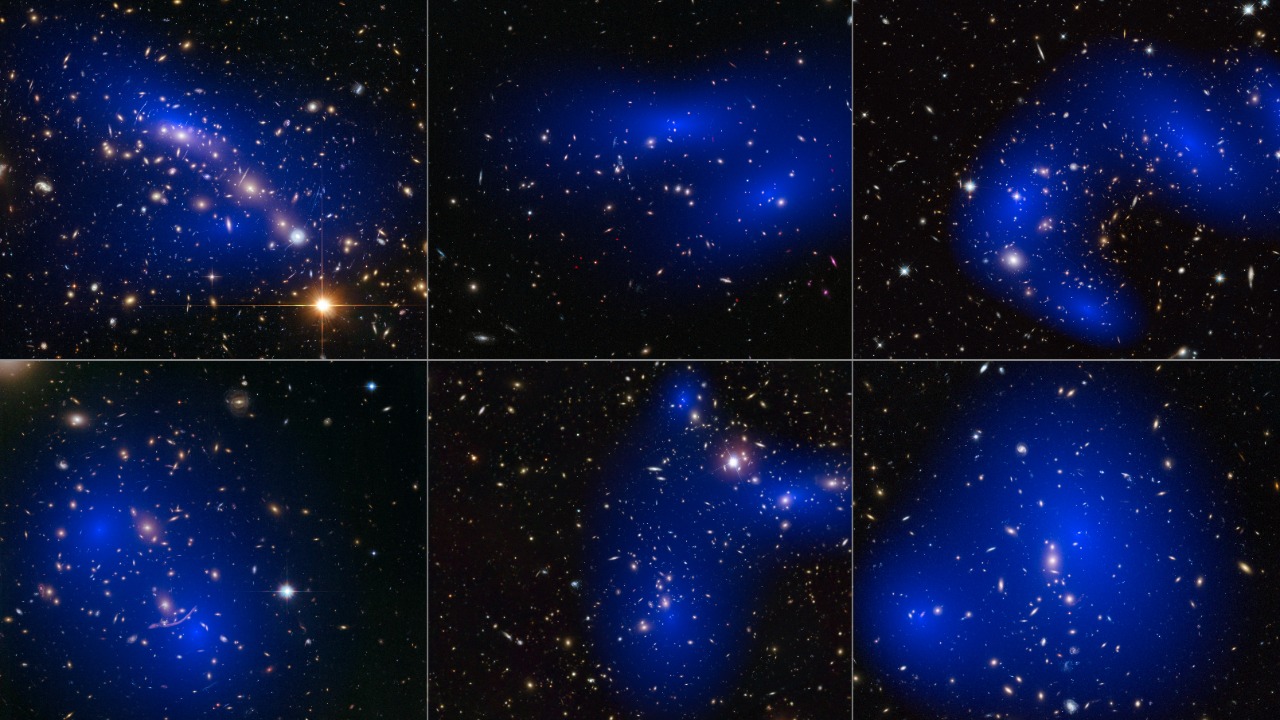
A mysterious glow in the Milky Way could be a beacon signaling the presence of dark matter, according to recent analyses. This development is part of a broader scientific endeavor to confirm the existence of dark matter, a quest that has included investigations into unusual galactic phenomena and the curious case of missing dark matter in a distant galaxy.
The Enigma of Dark Matter
Dark matter, an invisible substance inferred from its gravitational effects on visible matter, is estimated to constitute approximately 27% of the universe’s mass-energy content. Unlike ordinary matter, dark matter does not interact with electromagnetic radiation, making it detectable only through indirect methods such as galaxy rotation curves. The concept of dark matter was first proposed by Fritz Zwicky in the 1930s based on his observations of the Coma Cluster, and it has remained a tantalizing mystery ever since.
Recent Glow in the Milky Way
Recently, scientists have detected an unexplained synchrotron radiation signal in the Milky Way, a mysterious glow that could potentially be produced by dark matter annihilation. This glow appears as an anomalous lighting effect across the galaxy’s structure, challenging conventional explanations like cosmic rays from pulsars. If confirmed as evidence of dark matter, this discovery could impose constraints on particle models such as weakly interacting massive particles (WIMPs).
Advances Toward Confirmation
Astronomers are using gamma-ray telescopes like the Fermi Large Area Telescope to map the glow’s distribution in search of dark matter signatures. In 2025, multi-wavelength observations have been conducted to rule out alternative sources, such as astrophysical processes. International collaborations are playing a crucial role in analyzing data that brings scientists closer to definitive proof of dark matter’s existence.
Missing Dark Matter in Distant Galaxies
Earlier in 2025, the Indian Institute of Astrophysics (IIA) in Bangalore released a study investigating the absence of expected dark matter halos in a specific distant galaxy. The study used deep imaging and dynamical modeling to probe the galaxy’s mass distribution without the typical dark matter component. Possible explanations for this anomaly include tidal stripping or modified gravity theories as alternatives to standard dark matter paradigms.
Challenges in Dark Matter Detection
Despite these advances, the detection of dark matter faces technical hurdles, such as distinguishing dark matter signals from background noise in galactic emissions. Previous experiments, like those at the Large Hadron Collider searching for supersymmetric particles, have yielded inconclusive results. The debate over dark matter’s particle nature continues, with tensions arising between cosmic microwave background data and local density measurements.
Implications for Cosmology
Confirming the Milky Way glow as dark matter would validate the Lambda-CDM model of the universe, a cornerstone of modern cosmology. It could also have broader impacts on galaxy formation theories, where dark matter is thought to scaffold structure growth. Future tests, including upcoming missions like the Euclid telescope, aim to map dark matter distributions across the cosmos.
Ongoing Research Frontiers
The IIA’s contributions from Bangalore in studying anomalous galaxies are helping to refine dark matter models. Interdisciplinary efforts are combining particle physics with astrophysics to simulate dark matter interactions. Planned observations in late 2025 will follow up on the Milky Way glow, potentially providing stronger evidence of dark matter’s existence. As scientists move closer to confirming the existence of dark matter, the enigma of this invisible substance continues to illuminate new frontiers in our understanding of the universe.
More from MorningOverview